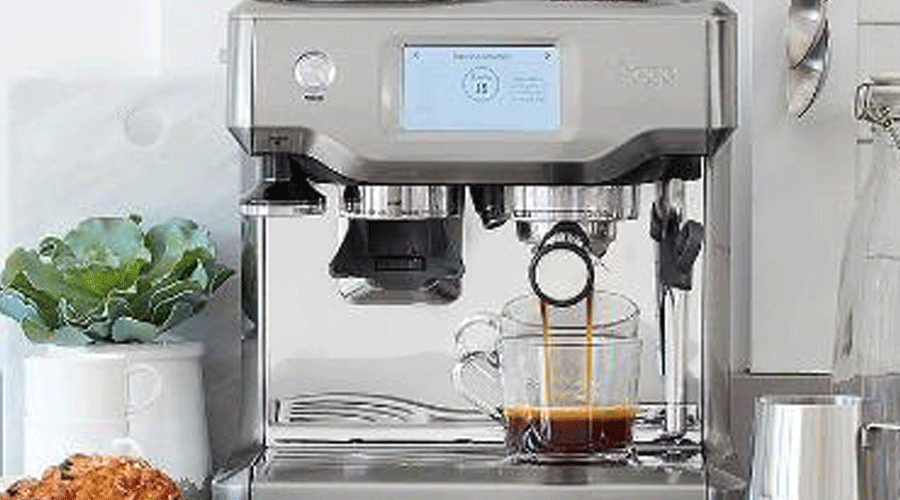Introducing Sage Barista Coffee Machine
Sage Barista coffee machines soared in popularity during the pandemic of 2020. If you have been fortuitous enough to have unpacked one yourself, there is a chance it was one of the models from Sage.
With entry level machines becoming more affordable and easier to obtain, it is easy to see how the Sage machines may have been the gift of choice for the home coffee connoisseurs over the past year.
As expert UK coffee roasters, we thought we should talk you through the pros and cons, recommended our very own Redber coffees and how to make the most of your shiny, new Sage coffee machine.
Before we go further, I just want to clear up a small detail which is recognised among coffee drinkers – a Sage machine IS different to a bean-to-cup machine and here is why:
Bean to cup machine vs Sage Barista Coffee Machine
With such a large array of affordable coffee machines available on the market, getting the correct type of machine may seem like a complex decision. Bean to cup machines produce delicious, fresh coffee by the touch of a button. After adding the freshly roasted coffee beans, the coffee will be ground and poured with no further input from the consumer.
Bean to cup machines are a great addition for a variety of venues, especially offices and any coffee shop that wants espresso-based drinks in a hurry.
As much as bean to cup machines are efficient, they do not offer the same level of control as a traditional coffee machine as they tend to lack the technology a skilled barista can use. Barista style coffee machines allow the user to add ground coffee to a group handle which you would then ‘tamp’. Tamping is the art of compressing the espresso ground coffee so it can be fully extracted. These two stages are so commonly seen in coffee shops and cafes. It is no surprise why coffee lovers want to be able to do this at home!
How To Use A Sage Barista Coffee Machine:
A Barista coffee machine is an Espresso machine that has a grinder built into it. This means that you can buy Redber’s freshly roasted coffee beans and add them straight to your machine. The machine will then grind them to the correct coarseness before brewing up a smooth Espresso full of flavour into your cup.
Even with an easy-to-use machine like the Sage Barista, there are a few instructions worth keeping in mind when aiming for that smooth, perfect cup of coffee. Our how to video below explains it all very well but if you have experienced more bitterness to your coffee than you would have liked, keep reading to learn how to solve it.
WATCH OUR SAGE HOW TO VIDEO HERE
Which Are The Best Coffees To Use For A Sage Coffee Machine:
With Barista coffee machines, you are spoilt for choice. With no need for a separate grinder, you can buy your favourite coffee as whole beans rather than pre-ground. This has many benefits, not least when it comes to flavour and freshness.
There are some machines are compatible with both whole beans and pre-ground coffee. It is always a great idea to check whether this is the case before buying your new coffee machine, particularly if you have a personal preference in ground vs whole beans.
Our Best Coffee for Sage Barista Coffee Machines:
We all want coffee full of flavour, and to reach the desired rich espresso with plenty of flavour, opting for a dark or medium to dark roasted coffee bean is highly recommended. Bu using a darker roast you will produce a coffee that’s suitable for milk-based coffee drinks such as lattes, cappuccinos and flat whites. Dark roasts tend to cut through milk or alternatives better than a light roast.
I recommend that you try one of the following medium- dark & dark roasts for your espresso coffee machine:
Redber Signature Espresso Blend
Costa Rica San Francisco Honey
Guatemala Antigua Los Volcanes
TIP: Sage Espresso Machines – How To Reduce Bitterness:
To make your coffee taste less bitter, reduce the length of the coffee shot. This means reducing the actual amount of liquid that makes up the espresso shot but reducing the amount of liquid.
Normally when producing a 57ml (double) of espresso, you are pouring 60 grams of liquid weight. To make your coffee less bitter, we want to pour 40 grams of liquid weight instead.
Because most of the Sage Espresso machines use so called pre-infusion, the extraction time from pressing the button should ideally be around 30 seconds.
The grind should produce an even flow of espresso from the group handle (also called ‘portafilter’), which is the handle with what looks like two mouse’s tails on it.
How to Clean Sage Barista Touch
An important aspect to consider when buying a coffee machine is how easy and how often to clean it.
Luckily, the Sage Barista is not difficult to clean, you just need to follow step by step guides on the screen.
WATCH OUR HOW TO CLEAN AND DESCALE VIDEO HERE
Browse our products to Clean Sage Barista:
Other Sage Accessories:

